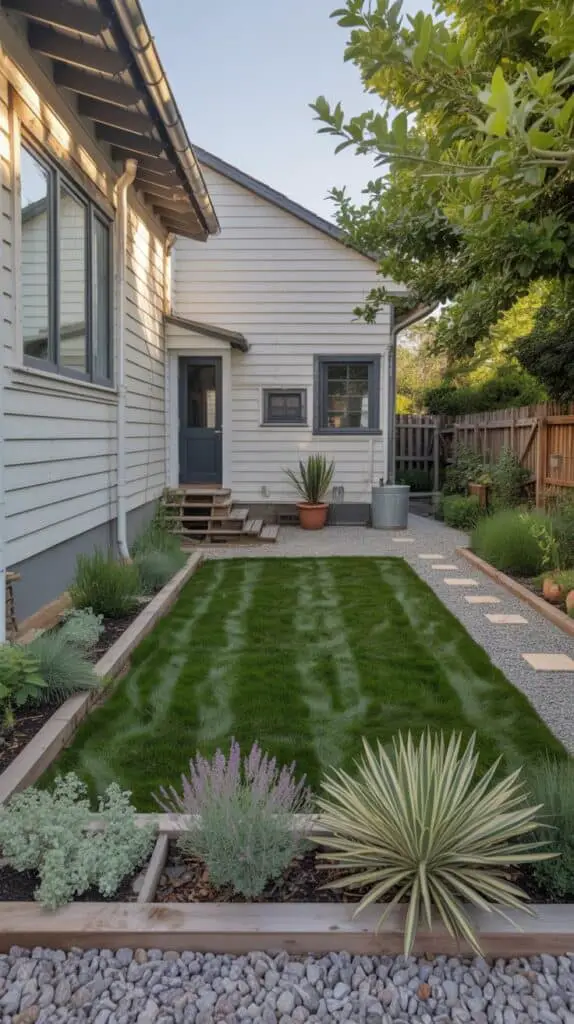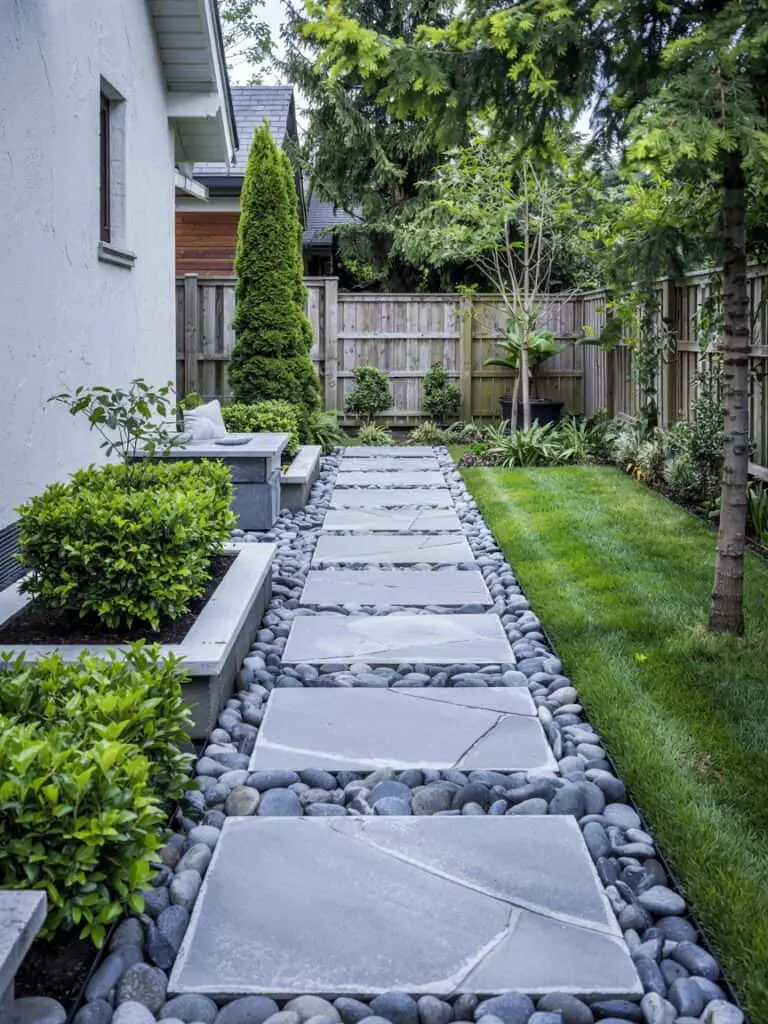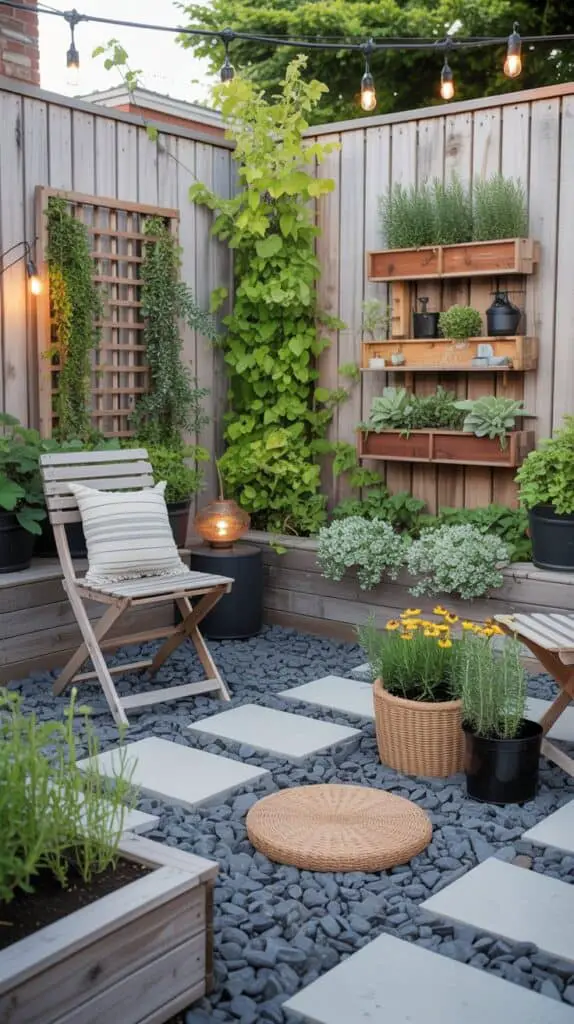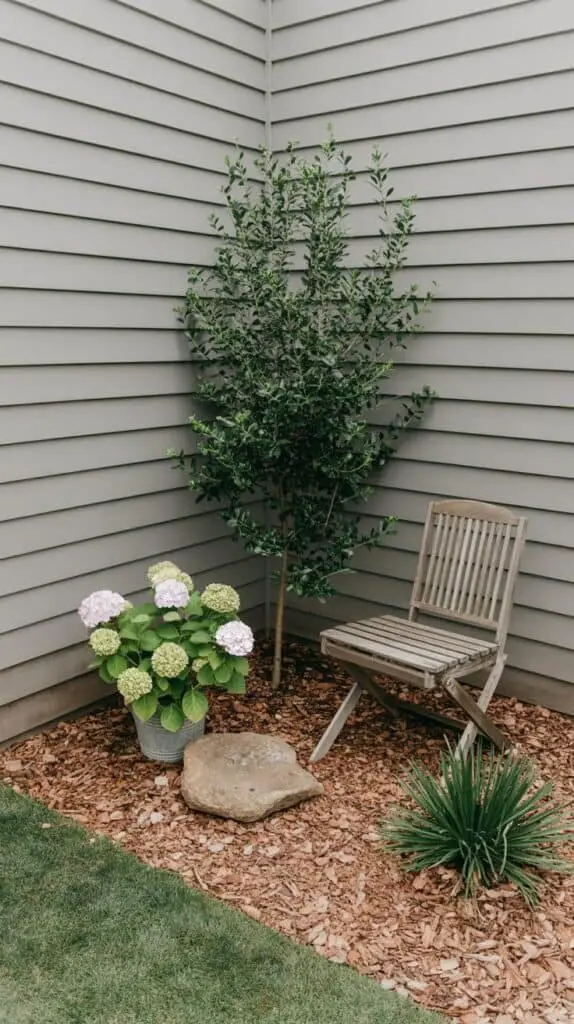
Here’s the thing no one tells you when you get excited about “fixing up the yard”: plants are expensive, and the watering bill? Also rude. Especially in summer when your back lawn suddenly turns into crispy toast and the side yard becomes the spot where garden tools go to die.
That’s when the word zeroscaping starts to sound kind of magical.
If you’re new to it, don’t worry—zeroscaping (sometimes spelled xeriscaping) is just a fancy way of saying: “Let’s make this yard low-maintenance, drought-friendly, and way less thirsty—without making it ugly.” And yes, it absolutely works for side yards, back patios, and even those awkward zones by the fence.

This article’s for the people who want that clean, modern backyard look without spending a fortune on turf and sprinkler systems. Or who just want a space that stays cute—even when you forget to water it for, like, a week and a half.
Let’s go through a few doable, family-friendly zeroscaping ideas that don’t just look good—they actually save you money too.
Replace Grass with Gravel and Native Plants

We need to talk about your lawn. Because unless you’re deeply into mowing or have a pet sheep (respect), most of us don’t really need all that grass. One of the easiest ways to zeroscape a backyard or side yard is to ditch the turf and swap in a mix of gravel, native plants, and just enough structure to feel finished.
Start by clearing the area—old turf, weeds, debris, the random toys that live back there now. Then lay down a weed barrier fabric, and fill the space with pea gravel, crushed granite, or river rock (choose based on what drains best in your climate). Around the edge, add low-maintenance, drought-tolerant plants like lavender, sedum, or feather grass. Group them in threes or fives for a modern look.
You can frame the space with chunky wood beams or pavers, or add a few large pots for color. No lawn mower. No sprinkler schedule. Just one pretty space that doesn’t ask for much—and still looks styled.
This idea works especially well for side yards, where grass doesn’t grow anyway and no one really wants to walk barefoot. Plus: gravel’s great for drainage and keeps the mud situation under control.
Build a DIY Rock Garden Along the Fence Line

Fence lines are usually where garden dreams go to fade out. But with a little zeroscaping magic, you can turn that blah strip of space into something surprisingly nice—and very low effort.
Try building a DIY rock garden that runs the length of the fence. Think of it like a border, but better.
Here’s what you’ll need:
- Mixed rock sizes (river rock, decomposed granite, or large stones)
- Weed barrier fabric
- A few structural plants—yucca, agave, rosemary, or ornamental grasses
- Maybe a few repurposed garden sculptures or terracotta pots
Lay out a clean edge along the fence using bricks, pavers, or even scrap lumber. Add your weed barrier, then fill in your chosen rocks. Place your plants in clusters—don’t overdo it—and leave lots of negative space. It keeps things modern and cheap.
The result is a clean, sculptural side yard layout that requires almost no water and doesn’t ask for weekend pruning. Even better: it hides that weird gap under your fence and stops things from growing where they shouldn’t.
Create a Modern Patio Garden Without the Lawn

If your backyard’s main goal is somewhere to sit without being attacked by grass clippings, this one’s for you.
A modern patio garden can totally work within a zeroscaping budget if you’re smart about your materials. Start by mapping out your seating zone. Use gravel or reclaimed pavers for flooring, then build up your “green” space vertically. No digging needed.
Ideas for easy vertical elements:
- A wooden trellis with climbing vines (try jasmine, clematis, or even cucumbers)
- DIY planter boxes attached to the fence
- Big ceramic pots with rosemary, sage, or other herbs you’ll actually use
Skip the high-maintenance flower beds and focus on texture and shape—not just blooms. Add some string lights or solar lanterns, a few cushions on folding chairs, and you’ve got a whole patio garden design that feels curated but still natural.
This works especially well for small backyard landscaping ideas where you’re not trying to entertain 50 people—just eat a meal outside without watering everything first.
Fill Awkward Corners with Mulch and a Feature Plant

Every yard has that one corner—you know the one. It’s too shady for flowers but too sunny for moss, and nothing ever quite works there. Instead of forcing it, turn that space into a low-effort garden corner with mulch and a single anchor plant.
Here’s the plan:
- Lay down bark mulch or wood chips to clean up the surface
- Add one striking plant that can handle a bit of neglect—like hydrangea (if you have shade), a dwarf olive tree, or an ornamental grass
- Tuck a large rock or vintage garden chair next to it for structure
This looks especially good near patio edges, utility sheds, or where the side yard meets the back. It’s a great budget backyard landscaping trick that fills space without fuss.
Plus, mulch helps retain water for any nearby plants and keeps weeds at bay. Less mess, less mud, and a corner that finally feels done.
Use Pavers and Groundcover Instead of a Full Deck

If a full deck isn’t in the budget (or sounds like too much maintenance), try building a paver patio with a ground cover instead. It’s affordable, easy to install, and totally zeroscape‑friendly.
Start by laying stepping stones or square pavers in a loose grid. Leave gaps between them—around 2–4 inches—and plant a low-growing groundcover that’s tough enough to be walked on. Some good picks:
- Creeping thyme
- Dymondia
- Corsican mint
- Blue star creeper
This idea gives you all the structure of a real patio, without the water or wood maintenance. It also drains well (goodbye puddles) and feels cooler underfoot in summer.
Great for side yard landscaping if you want a tidy, finished path that doesn’t look like a driveway—and amazing for modern backyard designs where the goal is “natural but clean.”
Final Thoughts
Zeroscaping isn’t about making your yard look dry or empty—it’s about designing a space that works with your climate, with your budget, and without constant upkeep. And when you’re balancing pets, kids, tight weekends, and a not-so-unlimited water bill, that kind of low-maintenance magic starts to feel pretty necessary.
Whether it’s swapping grass for gravel, adding a few plants that don’t care if you forget them, or finally doing something with that awkward side yard, every little change adds up. And honestly? Some of the simplest ideas turn out the most beautiful. You don’t need to rip everything out or start from scratch. You just need to make it make sense—for you.
Let your yard breathe a little. Let it be imperfect. Let it save you time, money, and more than a few summer afternoon sighs.
And if all you do this year is mulch one weird corner and add a few flat stones near the fence? That still counts. That’s still design. And that’s a win.
